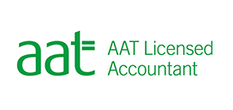|
IR35 was introduced by HMRC in April 2000, This legislation aims to identify individuals that are using a 'personal service company' (PSC) as an intermediary to avoid paying the correct tax and national insurance and get an unfair advantage according to HMRC, who view these individuals as “disguised employees” rather than self-employed. IR35 was introduced to allow HMRC to crack down on 'disguised employees' and stop the loss of tax and national insurance to the exchequer. In order to assist businesses to distinguish between employees and self-employed, an employment status indicator (EIS) tool has been developed which can be found on HMRC’s website. The engager and the worker are both responsible to distinguish the workers employment status as the engager would have to ensure that they fulfil the tax and national insurance contribution liabilities. HMRC will look at both the way the work is carried out by the worker on daily basis and the written contract between the parties to determine whether they are caught by IR35, The main assessment criteria’s are:
The degree of Supervision, Direction or Control over how the worker completes their tasks is another test to clarify ones employment status. A Self-employed worker may be asked to perform a particular task or provide a service at a specific time and location but it’s not likely for the client to have control over how the task is performed although this doesn’t affect the rights of the client (engager) to request the work carried out to be of certain quality. An employed person on the other hand are likely to be told where and how to perform their tasks and is subject to a high degree of control. Finally mutuality of obligation is another area for HMRC to determine an individual’s employment status. A self-employed contractor would benefit from providing their services efficiently and moving to another assignment or task and would not be entitled to expect further work form the same engager. However an employee would be supplied with continues supply of work form the employer and would be expected to carry out the task when he is required to do so. When work is regularly provided to a contractor HMRC may take the view that an employee status has been created by custom and habit and as a result a great emphasis is been place on the right of the contractor to walk away from a contract early, if they choose to. For further information please contact us on info@intact-accounting.co.uk.
0 Comments
Your comment will be posted after it is approved.
Leave a Reply. |
Categories
All
Recent Posts
|
Privacy Policy
The information contained in this website is intended for reference, education and informational purposes only. The contents are based on, or derived from, information generally believed to be reliable, although Intact Accounting Limited accepts no liability with the user’s reliance on it.
The Information contained in or provided from or through this website does not constitute financial advice, investment advice, trading advice or any other advice. You should undertake independent due diligence and consultation with a professional financial advisor relating to these matters. You understand that using any or all of the information contained in this website is at your own risk.
The information contained in this website is intended for reference, education and informational purposes only. The contents are based on, or derived from, information generally believed to be reliable, although Intact Accounting Limited accepts no liability with the user’s reliance on it.
The Information contained in or provided from or through this website does not constitute financial advice, investment advice, trading advice or any other advice. You should undertake independent due diligence and consultation with a professional financial advisor relating to these matters. You understand that using any or all of the information contained in this website is at your own risk.
For more information contact us today on info@intact-accounting.co.uk to arrange a free no obligation initial consultation with one of our qualified consultants.
Intact Accounting Limited, 8c Canons Corner, Edgware, London, HA8 8AE.
Intact Accounting Limited, 8c Canons Corner, Edgware, London, HA8 8AE.
COPYRIGHT © 2014 - 2021
INTACT ACCOUNTING LTD
ALL RIGHTS RESERVED
INTACT ACCOUNTING LTD
ALL RIGHTS RESERVED





